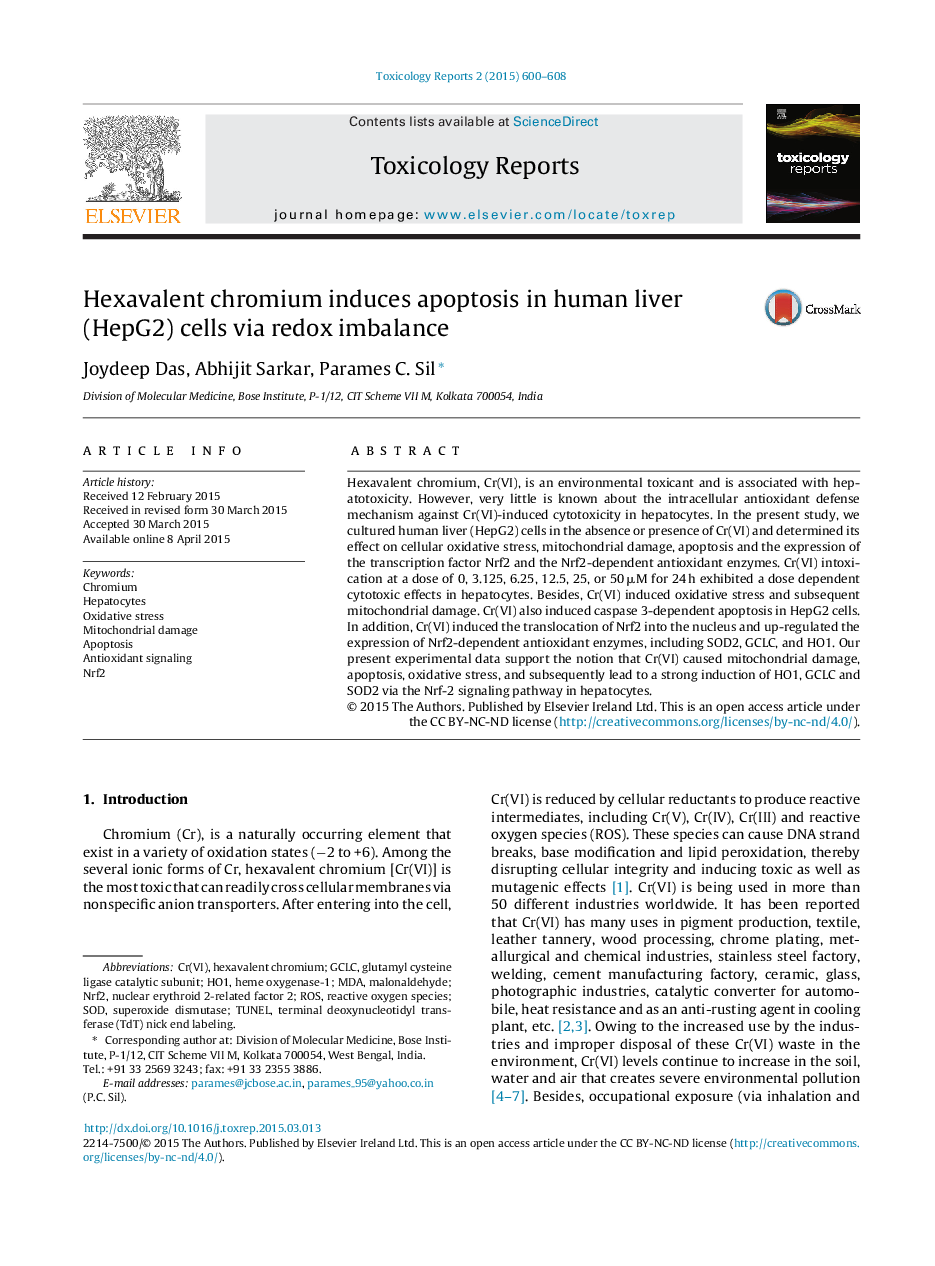| Article ID | Journal | Published Year | Pages | File Type |
|---|---|---|---|---|
| 2572253 | Toxicology Reports | 2015 | 9 Pages |
Hexavalent chromium, Cr(VI), is an environmental toxicant and is associated with hepatotoxicity. However, very little is known about the intracellular antioxidant defense mechanism against Cr(VI)-induced cytotoxicity in hepatocytes. In the present study, we cultured human liver (HepG2) cells in the absence or presence of Cr(VI) and determined its effect on cellular oxidative stress, mitochondrial damage, apoptosis and the expression of the transcription factor Nrf2 and the Nrf2-dependent antioxidant enzymes. Cr(VI) intoxication at a dose of 0, 3.125, 6.25, 12.5, 25, or 50 μM for 24 h exhibited a dose dependent cytotoxic effects in hepatocytes. Besides, Cr(VI) induced oxidative stress and subsequent mitochondrial damage. Cr(VI) also induced caspase 3-dependent apoptosis in HepG2 cells. In addition, Cr(VI) induced the translocation of Nrf2 into the nucleus and up-regulated the expression of Nrf2-dependent antioxidant enzymes, including SOD2, GCLC, and HO1. Our present experimental data support the notion that Cr(VI) caused mitochondrial damage, apoptosis, oxidative stress, and subsequently lead to a strong induction of HO1, GCLC and SOD2 via the Nrf-2 signaling pathway in hepatocytes.
